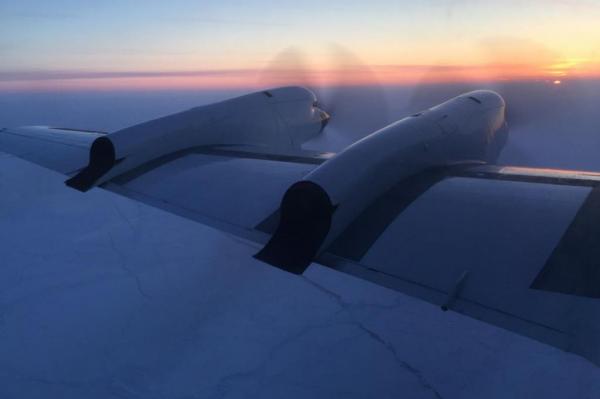
March 12 (UPI) — The NASA mission that has produced unprecedented aerial 3D-views of Arctic and Antarctic ice sheets will be expanding for the first time to the Arctic Eurasian Basin.
NASA’s Operation IceBridge, a nine-year mission to study how polar ice is changing due to global warming, has studied Arctic and Antarctic ice sheets through dramatic 3D-images obtained by flights over the areas.
For the mission’s 2017 Arctic spring campaign, NASA will explore the Arctic Eurasian Basin with the help of two research flights based out of Svalbard, a Norwegian archipelago in the northern Atlantic Ocean from March 9 through May 12.
“This is IceBridge’s ninth year in the Arctic and we’re expecting this to be one of our most extensive campaigns to date,” Nathan Kurtz, Operation IceBridge’s project scientist and a sea ice scientist at NASA’s Goddard Space Flight Center in Greenbelt, Md., said in a press release. “We are expanding our reach to the Eurasian sector of the Arctic, so we’re hopefully going to get more sea ice coverage than we ever have.”
The Arctic campaigns typically operate from Thule Air Base in northwest Greenland, Fairbanks in Alaska and Kangerlussuaq in southwest Greenland.
The expansion of the Svalbard site will allow scientists to collect data on sea ice and snow in a section of the Arctic Ocean not widely studied before, along with measurements of glaciers in the Svalbard archipelago.
Researchers believe the sea ice characteristics on the Eurasian side of the Arctic may be different from the Amerasian side.
“Most of the available data on snowfall in the Eurasian Basin is outdated, from drifting stations that operated between 1954 and 1991,” said Ron Kwok, a member of the IceBridge science team and a sea ice researcher at NASA’s Jet Propulsion Laboratory. “When those surveys were done, we still had a lot of thick sea ice in the Arctic. Now it’s mostly thinner, first-year ice, so the snow we’re going to see on top is going to be different than what was there before.”
The measurements gathered from the IceBridge of snow on sea ice is essential for NASA’s Ice, Cloud and Land Elevation Satellite-2, or ICESat-2, which will use laser beams to measure the elevation of sea ice floating on the ocean.
The primary goal of IceBridge is to provide support for ICESat-2, which is scheduled to launch in 2018.
IceBridge scientists will collaborate with several international teams to collect and compare measurements of snow and ice. One of the largest collaborations will be with CRYOVEX, a campaign designed to validate data gathered by the European Space Agency’s CryoSat-2 satellite.
For the spring campaign, the IceBridge team will once again be flying NASA’s P-3 Orion.
“We have our favorite airplane and crew back,” said IceBridge mission scientist John Sonntag. “This makes us more effective, because there aren’t many other crews in the world that are as experienced with polar flying as this team is.”





